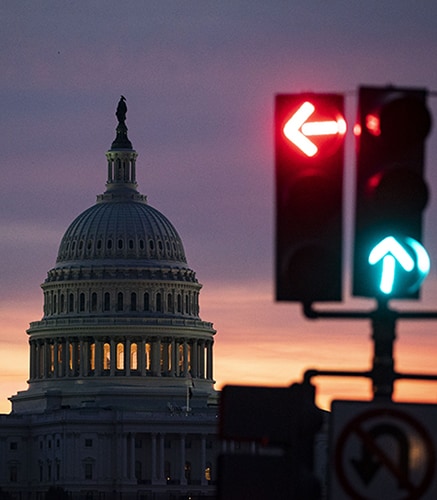Tax News You Can Use | For Professional Advisors
By Cyrus Commissariat, Associate Wealth Advisor and
Jane Ditelberg, Director of Tax Planning
July 30, 2025
The annual tradition of picking a health insurance plan for one’s family can feel like a daunting task. Setting aside that these plans are awash with acronyms and jargon, there is the very real question: How much risk am I comfortable with? For those that are comfortable with more risk, there can be material tax savings. Since 2003, taxpayers have had the option of selecting a High Deductible Health Plan (HDHP), which, when paired with a Health Savings Account (HSA), can result in significant savings. This involves taking on potentially higher out-of-pocket medical expenses for the opportunity to contribute funds to a tax-deferred account.
The HSA offers three tax benefits, including tax-free contributions, tax-deferred growth and tax-free withdrawals. By contributing to an HSA, the taxpayer reduces their income by the amount contributed, which reduces their income tax liability for the year. Income from interest and dividends is not taxed so long as it remains in the account. Finally, when funds are withdrawn, no tax is assessed on income or capital gain as long as the funds are used for Qualified Medical Expenses (QMEs). In the next open enrollment, an HDHP combined with an HSA may be the right choice to maximize tax efficiencies.
What Is A High-Deductible Health Plan?
HDHPs are a category of insurance plans that allow taxpayers to receive tax advantages for self-insuring. The IRS sets the minimum annual deductible ($1,650 for an individual and $3,300 for family coverage) and the out-of-pocket maximum ($8,300 for an individual and $16,600 for family coverage). Essentially, this means that the minimum that an individual insured must pay out-of-pocket before insurance coverage kicks in is $1,650: Once this minimum is met, the individual and the insurance company split costs until the individual meets the $8,300 maximum out-of-pocket costs, beyond which point insurance will cover 100%.
What Is A Health Savings Account?
The HSA is a savings or investment account that a taxpayer can fund with pre-tax dollars if (and only if) they are enrolled in an HDHP. Conceptually, participants in HDHPs can save money in an HSA to cover their self-insured medical expenses, and withdrawals are tax-free if they are used for that purpose. However, unlike dollars used to purchase more insurance coverage, if the taxpayer does not incur medical expenses or is able to cover them from current income, the HSA has the added benefit of tax deferral, even if funds are withdrawn for other types of expenses.
The amount that an individual and family may contribute to an HSA is adjusted annually for inflation by the IRS. In 2025, an individual, their employer, and even family members may contribute up to $4,300, and a family may contribute up to $8,550. Individuals over the age of 55 can make “catch up” contributions of an additional $1,000. The total contributed to an HSA from all sources cannot exceed the annual limits set by the IRS.
An HSA can be held either as a savings account or an investment account. Choosing which type of account largely depends on the risk appetite of the taxpayer. Interest-bearing savings accounts offer the lowest return but have the advantage of being liquid in the event of unexpected health expenses. HSA funds that are invested carry market risk. Further, invested funds are less liquid, and emergency medical expenses may require the sale of investments at inopportune moments. However, investing also carries the possibility of greater asset accumulation. No matter which account type the taxpayer chooses, the income from dividends and interest as well as the growth in the value of invested assets are tax-free so long as any funds withdrawn are used for qualified medical expenses.
What Is A Qualified Medical Expense?
If an expense would qualify for the medical and dental expense deduction, then it is a QME. QMEs are determined by the IRS in Publication 502 (2024 Publication 502) and are adjusted annually. The list of QMEs has gradually grown and now includes prescriptions, copays, fees and transportation to a doctor’s office.
What Are the Penalties For Withdrawing For A Non-Medical Reason?
A taxpayer is able to withdraw from an HSA for any reason. If the withdrawal is not for a QME, then the withdrawal is subject to income tax and an additional 20% penalty. After the taxpayer turns 65 or if the taxpayer becomes disabled, the rules change, and the HSA starts to look more like a normal savings account. Withdrawals for QMEs remain untaxed, but withdrawals for non-QMEs are subject to income tax but no additional penalty.
How Can I Factor An HSA Into My Retirement Plan?
This extra flexibility after age 65 makes an HSA an attractive retirement savings vehicle, especially since a taxpayer can contribute an additional $1,000 per year to an HSA after age 55. The taxpayer gets the benefit of excluding the contribution from their income, tax-free growth and tax-free withdrawal if used for a QME. However, if the taxpayer withdraws for another expense after age 65, the only tax cost to the taxpayer is the income tax.
Example:
Nora is a 45-year-old single woman who makes $350,000 a year. From ages 45 to 55, she is enrolled in an HDHP and puts the maximum amount of $4,300 into an HSA each year. From ages 56 to 70, when she retires, she contributes the maximum amount and adds a further $1,000 annually in catch-up contributions. She invests her HSA in marketable assets with an average annual return of 5%.
The following table illustrates how much she will have in the account if she makes no withdrawals.
| Age | Value of Account |
|---|---|
| 50 | $30,711 |
| 65 | $174,749 |
| 70 | $253,435 |
| 75 | $323,454 |
If, at age 50, Nora withdrew $10,000 to cover medical expenses not covered by her HDHP, she would not pay any tax on the withdrawal for a QME. If that occurred, the value of her account at age 75 (assuming this is her only withdrawal) would be $281,591. If the $10,000 was for a vacation instead of medical expenses, Nora would need to withdraw $18,462 to cover the 20% ($2,000) penalty for early withdrawal plus income tax at a rate of 35%, and her balance at age 75 (assuming this is her only withdrawal) would be $260,935.
If Nora withdraws $25,000 at age 65 for knee surgery, which is a QME, she will pay no income tax on that amount. Her balance at age 75 (assuming this is her only withdrawal) would then be $283,732. If instead Nora needed $25,000 to replace her roof, she could withdraw from the HSA without paying the 20% penalty, since she is over age 65. However, because she will owe income tax on the amount withdrawn, she will need to withdraw $38,462 to have enough to pay income tax at 35%. Her balance at age 75 (assuming this is her only withdrawal) would be $260,804.
What Happens To The HSA When I Die?
Like retirement accounts, the HSA transfers by designation form. If the HSA is transferred to the surviving spouse, then it is simple. The HSA becomes the spouse’s HSA, the normal rules apply and there is no taxable event to the surviving spouse. However, if the HSA is transferred to someone other than the deceased’s spouse, the funds distributed to the designated beneficiary are treated as income to the beneficiary and taxed at the beneficiary’s normal income tax rate. If no such person is designated, the funds are distributed to the estate and taxed as income on the deceased's final income tax return.
In the case of Nora from our example above, if she made no withdrawals and died at age 75, her named beneficiary would receive the account worth $323,454 and owe income tax of $113,208 (at a 35% tax rate), leaving them with a benefit of $210,246.
What Happens If I Separate From My Employer Or Change Coverage?
The HSA is portable across employers and insurance plans; however, if you stop being enrolled in a HDHP, you can no longer contribute to the HSA. The funds and your ability to spend them do not go away.
How Does A HDHP Compare To A PPO And An HMO?
Preferred Provider Organization (PPO) and Health Maintenance Organization (HMO) refer to the management of the plan and not to the costs of the plan for the insured. An HDHP can be managed either as a PPO or as an HMO. The IRS sets the coverage rules for the HDHP whereas the insurance company determines the structure of the insurance plan as an HMO or a PPO.
Are There More Changes Coming From Washington?
After a flurry of policy proposals from the Senate and the House, there is only a minor change in the One Big Beautiful Bill Act. The final version will permit Bronze and Catastrophic Plans bought through the Marketplace to be treated as HDHPs.
Key Takeaways:
- HSAs are currently available to taxpayers in HDHPs
- Individuals can put up to $4,300 and couples can put up to $8,550 into HSAs each year
- Taxpayers aged 55 and up can make additional $1,000 “catch-up” contributions each year until retirement
- Contributions to the HSA are tax-free, growth is tax-free and withdrawals are tax-free as long as they are used for medical expenses
- Before age 65, withdrawals for uses other than medical expenses are subject to a 20% penalty and are taxed as ordinary income. After age 65, there is no penalty for withdrawals for any purpose, and withdrawals for uses other than medical expenses are taxed as ordinary income



